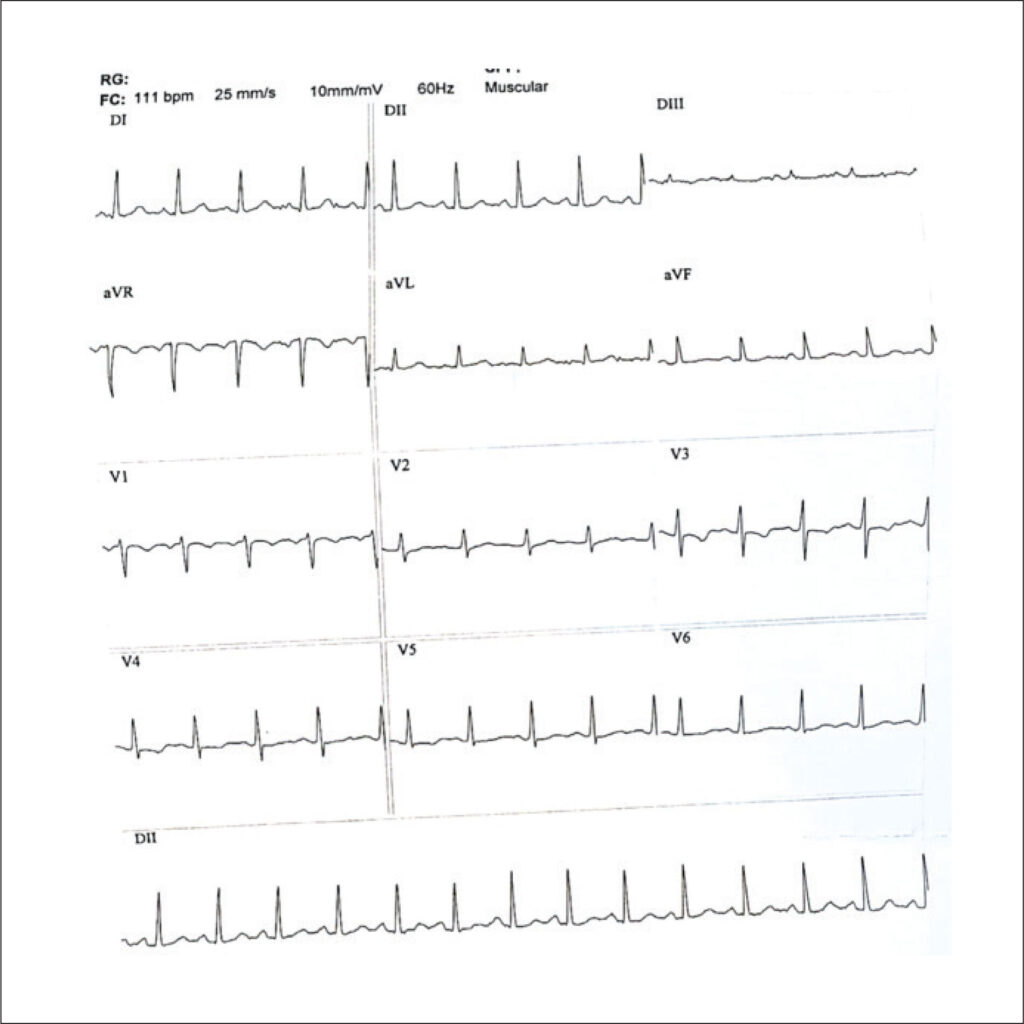ABC Heart Fail Cardiomyop 2023; 3(3): e20230066
Post-COVID Tachycardia Syndrome: Could It Be Myocarditis? A Case Report of a Patient Treated with Ivabradine
Abstract
This report illustrates a case of acute myocarditis in a patient who was recently hospitalized for COVID-19. Myocarditis was suspected based on the presence of tachycardia, the only abnormality present on physical examination, as well as high levels of B-type natriuretic peptide. The diagnosis was confirmed with cardiac magnetic resonance image, which showed the presence of late enhancement, predominantly subepicardial, in the inferolateral and inferior walls of the left ventricle. The patient did not meet any of the criteria for endomyocardial biopsy (progressive heart failure, severe cardiac dysfunction, ventricular arrhythmias, atrioventricular blocks). Therefore, the treatment was focused on heart rate control. Beta-blocker is the first option for rate control, but the patient had a contraindication. Thus, ivabradine, a selective heart rate reducer was used. This drug has been poorly studied in the context of post-COVID-19 syndromes, and the present case suggests a benefit for heart rate control in patients with post-COVID-19 tachycardia syndrome.
660


